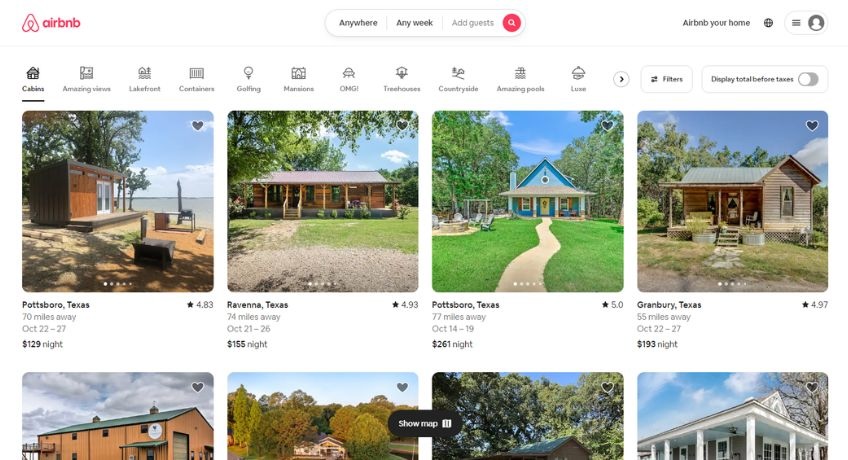When it comes to websites, there are two main types: static and dynamic. Comparing the two is like comparing a poster to a movie that shows a different ending depending on who’s watching.
Static websites are like posters. They show the same stuff to everyone, just like a printed brochure. If you want to change something, you’ve got to roll up your sleeves and manually update it.
On the flip side, dynamic websites are like those ever-changing movies. They’re super smart and alter what they show based on who’s looking. A dynamic website gives you your own personalized website experience.
In this article, we’re going to break down the differences between these two website types. No tech jargon, just simple explanations. So, whether you’re starting a website or just curious, you’ll know which type of website would be best for your brand.
Static Websites Serve the Same Content to Everyone
Static websites are like digital billboards that display the same content to every visitor. Whether you’re in New York or Tokyo, the information on a static website is the same. It’s a one-size-fits-all approach.
Take Quick Sprout, as an example. When you visit our site, the blog posts you read load exactly the same, no matter who or where you are. We don’t show you recommendations based on your preferences. You have the freedom to sift through our content at your own pace to find exactly what you’re looking for.
Like with Quick Sprout, the key characteristic of static websites is consistency. As a website owner, you have complete control over what your visitors see, but it also means more effort to make even minor changes.
If you have a custom-developed site, your developer would need to go in and manually update the code in the CSS, HTML, or Javascript files.
If you’re using a site builder like Wix or Shopify, you don’t usually need to dig into code. You just update your website through the WYSIWYG interface, which will end up editing the code for you.
Static sites are best if you don’t need to change your content often. That’s why they’re great for brochure service sites, personal portfolios, and product landing pages.
Dynamic Websites Serve Content Based on Individual Users
As the name suggests, dynamic websites are adaptable. Dynamic sites create a unique experience for every visitor in real time by displaying content tailored to each user’s preferences and behaviors, offering highly relevant content to help keep users engaged.
Social media platforms like X (formerly Twitter) are prime examples of this ability. When you log in, your feed isn’t a static list of posts. Instead, it’s a dynamic stream that constantly updates to show you the latest tweets from the accounts you follow.
On the back end, complex algorithms consider your interests, engagement history, and who you interact with most. If you and I both log into Twitter, we’ll see different content because Twitter dynamically curates our feeds to match our tastes and activities.
We can find other examples of dynamic websites beyond social media. Ecommerce sites show products related to your browsing history, news websites recommend articles based on your reading habits, and streaming platforms suggest movies and shows that are similar to others you’ve already watched.
Sounds like dynamic websites are where it’s at, right? Well, it really depends on what you need your website to do. Let’s break down what each type of website does best.
Static Websites Give You Speed and Simplicity
Static websites are known for simplicity, speed, and security. Because they’re often easier to set up, you can get online faster.
And since static pages are pre-built and don’t rely on databases or server-side processing, they load swiftly. This quick loading time enhances the user experience, reduces bounce rates, and improves SEO performance.
Finally, with no backend infrastructure or server-side scripting, static sites have fewer security loopholes. In other words, they’re harder to hack. This inherent security makes static websites ideal for projects where data and privacy protection are crucial.
So, who uses static websites? We mentioned that they’re best for portfolios and service sites, but many tech companies build on static sites and use a separate CMS to serve any dynamic content.
Even larger enterprise organizations might consider creating static sites, as they can pick and choose their entire tech stack. The associated security benefits are a plus, too.
And remember, static doesn’t mean boring. Static sites allow you to incorporate animations and modern web design trends, plus you can get creative with adding microsites, like this dumpling game from Mailchimp.

Dynamic Websites Handle Large Amounts of Personalized Content
You might opt for a dynamic website if you have more complex needs. Because dynamic sites are database solutions, they’re inherently scalable and can handle large volumes of content and users.
On dynamic sites, most information is stored in databases on a server. A CMS like WordPress interacts with the database to fetch and display information in blog posts, galleries, and other interactive sections.
AirBnB is a prime example of an interactive, dynamic website. The homepage shows properties near your current location, and you can see more personalized results with active filters or use the map to find destinations by location.

Airbnb’s website is also highly scalable. Thousands of users search for rentals daily, and thousands of hosts list or update their properties. If Airbnb were a simple static site, it wouldn’t be able to keep up with the demand!
But dynamic sites like this also have greater hosting requirements and potentially higher hosting costs. If you’re creating a dynamic website, you’ll need a high-quality web host that has different plans to handle caching and high-traffic needs.
You’ll also want to use a security app or plugin to make sure your website is safe from attacks, since dynamic websites are more prone to security breaches.
Static Sites Can Be Better for SEO
As a final point of comparison, we want to point out that static sites excel in some areas that can help them rank faster in search engines.
Google, for instance, gives preference to websites that load quickly, making static sites a top choice. Static sites also have straightforward structures, so it’s easier for search bots to crawl and index them.
However, it’s not all bad news for dynamic sites. Typically, they offer greater chances for using keywords strategically. Additionally, visitors tend to spend more time on dynamic sites and engage with the content, which search engines appreciate.
But in general, if you’re looking for an SEO ally that’s fast, straightforward, and consistent, consider the friendly static website.
Should You Create a Static or Dynamic Website?
Static and dynamic websites each have their own unique traits and benefits. Static websites are typically the more reliable and straightforward option, which makes them perfect for simpler online content. On the flip side, dynamic websites bring interactivity, personalization, and scalability, making them great for complex, content-rich platforms.
The key to making the right choice is understanding your business’s goals and limitations. Ultimately, the best type of website is the one that’s going to help you achieve your goals faster and perform better in the long-run.
